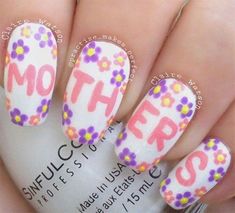Table of Contents
Introduction
Nail polish, a beloved cosmetic item used to enhance the beauty of nails, is easy to apply but can be a source of frustration due to its drying time. In this article, we’ll delve into the factors that influence how long nail polish takes to dry and provide practical tips on how to speed up the process. So, let’s jump right in and discover the secrets of quick-drying nail polish.
Factors Affecting Drying Time
Several factors impact how long it takes for nail polish to dry. Understanding these factors can help you choose the right polish and take the necessary steps to expedite drying. Let’s delve into the essential elements that affect nail polish drying time:
Nail Polish Formula
The composition of nail polish plays a vital role in determining its drying time. Traditional nail polish consists of three main ingredients: resin, solvent, and plasticizer. As the solvent evaporates, a thin film of resin and plasticizer remains, and the thickness of this film influences drying time.
Humidity and Temperature
Humidity and temperature also affect how quickly nail polish dries. High humidity and low temperatures can prolong the drying process, whereas low humidity and high temperatures can expedite it. To ensure faster drying, it’s best to apply nail polish in a cool, dry environment.
Thickness of Nail Polish Layer
The thickness of the nail polish layer is another factor that affects drying time. A thick layer takes longer to dry compared to a thin layer. Applying nail polish in thin coats, allowing each layer to dry completely before adding the next, is the best strategy for faster drying.
Application Technique
The way you apply nail polish also impacts drying time. Using a zig-zag motion or applying excessive pressure can create air bubbles, thereby slowing down drying. To optimize drying speed, opt for a smooth, even stroke when applying your polish.
Understanding these factors is crucial in ascertaining how long it takes for nail polish to dry. In the next section, we’ll explore various types of nail polish and their varying drying times.
Different Types of Nail Polish
There is a wide variety of nail polish available on the market, each with its own unique drying time. Let’s take a closer look at some of the most popular types of nail polish and how long they typically take to dry:
Regular Nail Polish
Regular nail polish is the most common type, and it dries within two to three hours, depending on factors such as humidity, temperature, and layer thickness.
Fast-Drying Nail Polish
Fast-drying nail polish is specifically designed to dry quickly, usually taking only 60 seconds to two minutes. This type of polish contains ingredients that evaporate more rapidly than traditional formulas.
Stay tuned for the upcoming two sections.
Other Types of Nail Polish
Apart from regular and fast-drying nail polish, several other options cater to various preferences. Let’s explore some of these alternatives and their respective drying times:
Gel Nail Polish
Gel nail polish requires a UV or LED lamp to cure and dries within 30 to 60 seconds under the lamp. Although the application process is more elaborate than with regular polish and necessitates specific tools, the result is long-lasting color.
Matte Nail Polish
Matte nail polish, a popular trend in the nail industry, typically dries within 5 to 10 minutes. Unlike traditional polish, it offers a non-glossy finish, making the slightly longer wait worthwhile.
Holographic Nail Polish
Holographic nail polish contains light-reflecting particles that create a captivating rainbow-like effect. It usually dries within 10 to 15 minutes, depending on layer thickness.
Metallic Nail Polish
With its shiny, metallic finish, this type of polish dries within 5 to 10 minutes, depending on layer thickness.
Glitter Nail Polish
Glitter nail polish, featuring mesmerizing glitter particles, takes slightly longer to dry than regular polish. Typically, it requires between 15 to 30 minutes, depending on the density of the glitter and layer thickness.
Understanding the different types of nail polish enables you to make an informed choice according to your needs.
How Long Does Nail Polish Take to Dry?
The drying time of nail polish varies depending on factors such as the type of polish, humidity, temperature, layer thickness, and application technique. Here’s a breakdown of average drying times for different types of nail polish:
- Regular nail polish: 2-3 hours
- Fast-drying nail polish: 60 seconds to 2 minutes
- Gel nail polish: 30-60 seconds under a UV or LED lamp
- Matte nail polish: 5-10 minutes
- Holographic nail polish: 10-15 minutes
- Metallic nail polish: 5-10 minutes
- Glitter nail polish: 15-30 minutes
It’s important to note that these figures represent average drying times and can vary depending on the aforementioned factors. To ensure faster drying, refer to the tips outlined in the next section.
Tips for Speeding Up Nail Polish Drying
To expedite the drying time of your nail polish, consider implementing the following tips:
- Ensure the application area is cool and dry, as high temperatures and humidity prolong drying.
- Apply thin layers of polish, allowing each layer to dry completely before adding another.
- Use smooth, even strokes during application to avoid creating air bubbles.
- Consider using fast-drying nail polish for quick results.
- If using gel polish, follow the specific application instructions and curing process outlined by the manufacturer.
- Opt for matte, metallic, or holographic nail polish if you desire faster drying times compared to regular polish.
- Plan your nail painting session when you have sufficient time available, allowing ample drying time without rushing the process.
By following these tips, you can enjoy nail polish that dries faster, saving you time and frustration.
In conclusion, the drying time of nail polish can be influenced by various factors, including the type of polish, humidity, temperature, layer thickness, and application technique. Understanding these factors and employing the aforementioned tips will help you achieve faster drying times and flawlessly polished nails. Happy painting!






